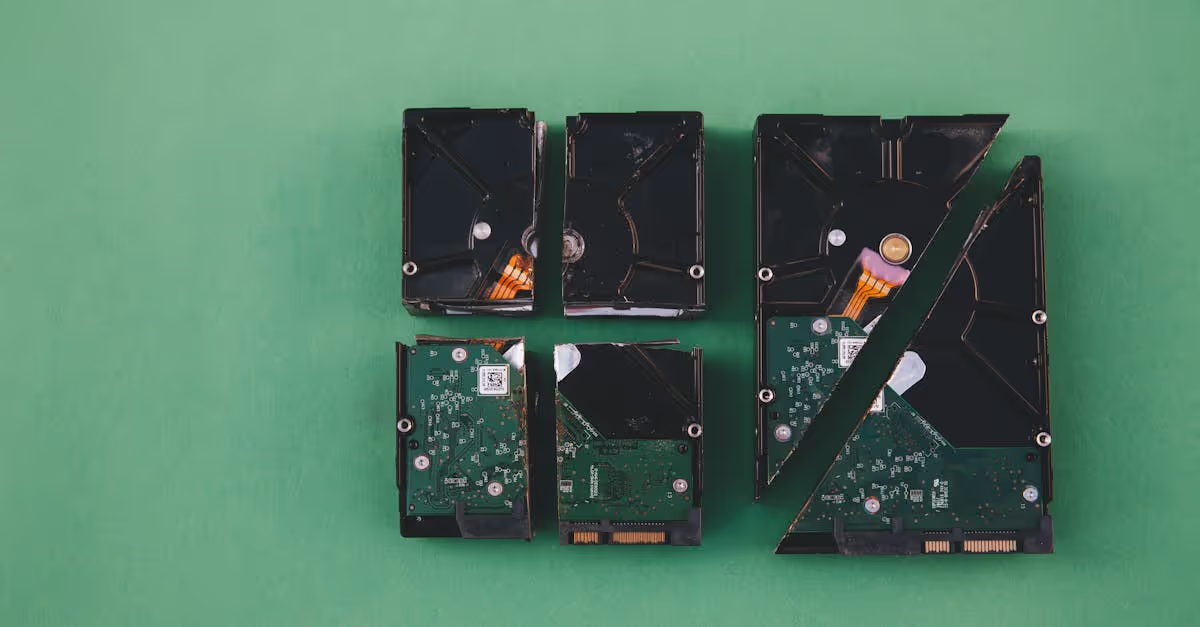Key Takeaways
- Importance of Pool Pumps: A well-functioning pool pump is essential for maintaining clean and clear water, with nearly 80% of pool owners experiencing pump-related issues.
- Types of Pool Pumps: There are three main types of pool pumps—single-speed, dual-speed, and variable-speed—each offering different energy efficiencies and operational benefits.
- Common Issues: Frequent problems include low water flow, unusual noises, leaks, and motor failure, all of which can disrupt pool maintenance if not addressed promptly.
- Signs of Failure: Warning signs like the pump not working, overheating, low water flow, and unusual noises indicate potential failures that require immediate attention.
- DIY Repairs vs. Professional Help: Simple repairs can often be handled by pool owners, but persistent issues, severe leaks, or low pressure may necessitate professional services for effective resolution.
- Selecting Replacement Services: Evaluating repair services based on reputation, cost transparency, and advanced tools is crucial for ensuring efficient and reliable pool maintenance.
A well-functioning pool pump is crucial for maintaining clean and clear water. Did you know that nearly 80% of pool owners face pump-related issues at some point? Understanding the signs of failure can save us time and money while ensuring our pools remain inviting.
Understanding Pool Pumps
Pool pumps are essential for circulating water and keeping our pools clean. Recognizing how they function leads to better maintenance and troubleshooting.
Types of Pool Pumps
We commonly encounter three types of pool pumps: single-speed, dual-speed, and variable-speed pumps.
- Single-speed pumps operate at a constant speed. They’re straightforward and often less expensive but can be energy-inefficient.
- Dual-speed pumps offer two operating speeds, making them more energy-efficient than single-speed models. They allow us to adjust based on our pool cleaning needs.
- Variable-speed pumps are the champions of efficiency. They operate at various speeds, optimizing energy use and reducing costs.
Selecting the right type can significantly affect our pool's cleanliness and our utility bills.
Components of a Pool Pump
Understanding the components improves our ability to diagnose issues. Key parts include:
- Motor: This powers the pump. A malfunctioning motor is a common cause of pump failure.
- Impeller: This component moves water through the system. Clogs can lead to decreased performance.
- Pump Basket: This catches debris before it reaches the filter. Regular cleaning is vital to prevent blockages.
- Seal: This keeps water from leaking. A worn seal often causes leaks, signaling a repair is necessary.
Familiarizing ourselves with these components helps us identify problems early, keeping our pools inviting and enjoyable.
Common Pool Pump Issues
Pool pump issues can disrupt our swimming experience. Recognizing common problems helps maintain a clean and inviting pool.
Low Water Flow
Low water flow often arises from several factors. Dirty filters pose a significant issue. When the filter gauge exceeds 10 psi, cleaning becomes necessary. Air in the system creates problems too. It frequently stems from faulty gaskets, o-rings, or a loose pump lid. Blockages can also reduce flow. We should check for debris in the skimmer, main drain, impeller, and pump basket. A low pool water level might impact the pump's ability to draw water properly. Addressing these factors improves water circulation.
Unusual Noises
Unusual noises can signal potential pool pump issues. Banging or rattling sounds often indicate loose components within the pump. Humming noises may point to electrical problems or a malfunctioning motor. Squealing sounds might originate from worn bearings or inadequate lubrication. Observing how our pump operates is vital. Staying attentive to unfamiliar noises helps pinpoint troubles early, allowing timely repairs to maintain a peaceful poolside atmosphere.
Leakage Problems
Leakage problems can arise from various sources in our pool pump system. Cracks in the pump housing or faulty seals can lead to water escaping. We must scrutinize the pump areas for wet spots or puddles to identify these leaks. Loose fittings or connections may contribute to the issue as well. By addressing leaks promptly, we prevent water loss and potential damage. Keeping the system sealed tight can save time and money in repairs.
Motor Failure
Motor failure ranks among the most serious pool pump problems. Motors can fail due to overheating, often caused by running dry or lack of maintenance. Electrical issues may also lead to failure. Inspecting wiring connections regularly can help detect faults early. Strange noises emanating from the motor indicate it might need attention. Treating motor issues promptly keeps our pool functioning efficiently and extends the lifespan of the equipment.
Signs of Pool Pump Failure
Identifying signs of pool pump failure helps maintain clean and inviting swimming pools. Recognizing these signs can save us from costly repairs or replacements down the line.
Warning Indicators
- Pump Not Working: A pool pump that doesn’t turn on may indicate an electrical issue. Look for blown fuses or loose connections. Checking the breaker box can also help isolate the problem.
- Overheating: When pumps overheat, they often shut off. This issue signals an overloaded circuit or blocked pump vents that need addressing.
- Low Water Flow: If the pump runs but the water flow is weak, dirty filters or excessive air trapped in the lines could be the culprit. Monitoring the filter gauge and keeping those filters clean boosts performance. Additionally, always keep the swimming pool water level adequate, and ensure the strainer basket remains filled.
- Unusual Noises: Strange sounds can hint at loose components, electrical problems, or worn bearings within the pump. Don’t ignore these noises.
When to Call a Professional
Recognizing when to call in the pros can make a big difference in our pool maintenance journey. If we notice persistent issues, professional help often saves us time and frustration.
- Frequent Shutdowns: If the pump repeatedly shuts off, despite checking the electrical connections, it’s time to consult a technician.
- Severe Leaks: Water pooling near the pump indicates a serious leak due to faulty seals or cracks. This problem needs immediate attention.
- Consistent Low Pressure: If cleaning the filters and adjusting water levels doesn’t resolve low water pressure, a professional can diagnose hidden issues within the system.
By keeping an eye out for these signs, we can maintain our pools efficiently and enjoy sunny days without worries.
Repairing Your Pool Pump
Repairing a pool pump can feel like a mini adventure. We’re all in this together, facing the occasional hiccup in our pool maintenance. Let’s dive into some DIY repair techniques and know when it’s time to swap that pump for a new one.
DIY Repair Techniques
DIY repairs can be a great way to save both time and money. Start by checking for poor water circulation. If we notice debris sitting stagnant, it’s time to inspect the pump. Cleaning or replacing dirty filters often restores flow. We might also check the pump basket for clogs. A quick rinse can work wonders.
Another common issue is leaks. If we find water pooling around the pump, let’s inspect the seal and O-rings. Replacing these inexpensive parts often resolves the issue. Unusual noises like grinding or squealing indicate possible debris in the impeller. Cleaning can eliminate these irritating sounds. For those who feel adventurous, lubricating bearings can also quiet down the pump.
When to Replace Instead of Repair
We should weigh the decision between repair and replacement carefully. If we face recurrent problems, a replacement might save more headaches. Pumps over ten years old often lack energy efficiency, leading to higher bills. If our pump is running continuously but struggling, it might be time to say goodbye.
Frequent leaks can signify internal damage. If we repair it only to find more issues soon after, investing in a new pump might be the better choice. Lastly, if the motor fails, repairs can be costly and not guaranteed to last. Let’s avoid the cycle of patching up problems; sometimes, a new pool pump refreshes not just our pool but our spirits as well.
Choosing Replacement Services
Choosing replacement services for our pool pump is crucial for maintaining the health and functionality of our swimming environment. Knowing what to look for can make the process smoother and more efficient.
Evaluating Repair Services
We evaluate repair services based on a few key factors. Check the service provider’s reputation and experience. Online reviews from other pool owners give us insight into their reliability. Ask for estimates and compare them. A transparent quote outlines costs clearly, helping us avoid unexpected expenses. Verify if they use advanced tools like job scheduling software for technicians. This automated field service solution streamlines the repair process, which can save us valuable time.
Involving ourselves in the selection process involves asking direct questions. Can they provide references? What’s their approach if additional issues arise during repairs? These conversations help ensure we choose a company that’s not only capable but also suited to meet our specific needs.
Cost Considerations
Cost considerations play a significant role in determining replacement services. We first need to establish our budget. Replacement costs for pool pumps range from $300 to $1,500, depending on the type of pump, labor charges, and any additional parts needed.
It’s wise to consider long-term savings. Variable-speed pumps, for instance, might have higher upfront costs but lead to lower energy bills over time. We also look into potential financing options, especially if our wallet feels a bit light. Asking about warranties on parts and services can provide peace of mind, reducing potential future expenses.
Communicating with repair teams about our budget helps them tailor solutions effectively. What savings could we realize by opting for an energy-efficient pump? How might we budget for preventive maintenance to avoid bigger repair bills later on? Engaging with these questions allows us to make informed choices while promoting a clean and enjoyable pool experience for everyone.
Conclusion
Maintaining a functional pool pump is crucial for our enjoyment and the cleanliness of our pools. By staying vigilant about signs of failure and understanding common issues, we can save ourselves from costly repairs. Whether we choose to tackle minor problems ourselves or seek professional help, being proactive is key.
When it comes time for a replacement, considering energy-efficient options can lead to long-term savings. Let’s prioritize our pool's health and ensure it remains a refreshing oasis for sunny days ahead. With the right knowledge and resources, we can keep our pools in top shape and enjoy every moment spent in the water.
Frequently Asked Questions
What is the importance of a pool pump?
A pool pump is essential for keeping pool water clean and clear. It circulates the water, ensuring proper filtration and chemical distribution, which helps maintain a healthy swimming environment.
What are the main types of pool pumps?
The three main types of pool pumps are single-speed, dual-speed, and variable-speed pumps. Single-speed pumps are simple but less energy-efficient; dual-speed pumps offer adjustable speeds for better efficiency, while variable-speed pumps optimize energy use and reduce costs significantly.
What are common signs of pool pump failure?
Common signs include the pump not working, low water flow, unusual noises, overheating, and leaks. Recognizing these indicators early can help prevent costly repairs and keep your pool enjoyable.
When should I call a professional for pool pump issues?
You should call a professional if you experience frequent shutdowns, severe leaks, or consistently low water pressure. These issues may indicate serious problems that require expert attention.
Can I repair my pool pump myself?
Yes, you can address minor issues such as poor water circulation and clogged filters. However, for more complex problems or older models with recurring issues, it may be best to consult a professional.
How do I choose a replacement service for my pool pump?
Evaluate pool pump repair services based on their reputation, experience, and cost. Checking online reviews, asking for transparent estimates, and asking direct questions can help you find a reputable provider.
What are the cost considerations for replacing a pool pump?
Replacement costs typically range from $300 to $1,500, depending on the type of pump. Consider long-term savings with energy-efficient models, like variable-speed pumps, when making your decision.






